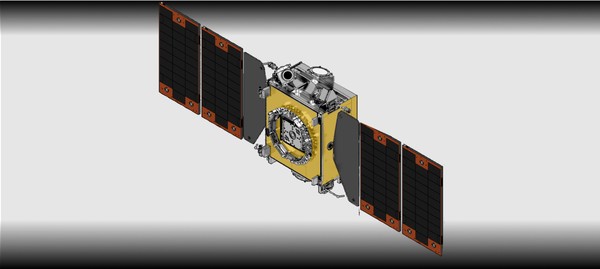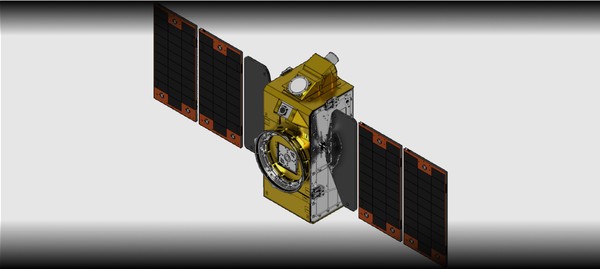Microsatellite platforms provide mission designers with pre-designed options for systems that can speed up missions. In this article we share details on a variety of different microsatellite buses and platforms available on the market.
Please note this is a fast-moving industry segment and we will be keeping this article up to date when new products come to market, or older sysems become obsolete.
Introduction to microsatellite platforms
Microsatellite platforms are pre-designed satellite systems featuring various subsystems, structural elements, and electronics to enable primary payloads to be integrated faster and with greater ease than creating a completely bespoke system.
They are often also referred to as buses and can bring various interesting new capabilities to engineers developing microsat missions and services.
There is significant variation in the masses and volumes of microsatellite platforms available on the market. You should carefully consider the performance and redundancy requirements of your mission or service against the cost of a larger system, to assess the overall potential return on investment (RoI) that is expected.
In addition, every mission team has a different set of specialist skills, so it is important to determine what sort of integration, calibration, and testing requirements each microsat platform has in order to determine the best system for your needs.
Aside from these characteristics, here are some of the other factors that need to be considered when selecting the right microsat bus for your needs:
- Available Size, Weight and Power (SWaP) budget
- Supplier location (e.g. for export controls purposes)
- Technology Readiness Level (TRL)
- Connectors and interfaces included
- Costs and lead time, considering achievable return on investment (RoI)
- Post-sales support and troubleshooting options
- Regulatory compliance considerations
- Any incorporated data standards or operating protocols
- Flexibility to rearrange the hardware included in the bus, if required
- Redundancies and contingencies onboard
Microsatellite payloads and technologies are bringing some powerful new capabilities to many different segments of the space industry. Utilizing a pre-integrated (and often pre-qualified) platform could be the ideal choice to accelerate the development of your mission.
You can find more such advice, as well as details on both microsat and CubeSat platforms, in this article. In the next section we share information on variety of microsatellite platforms on the market.
Microsatellite platforms on the global market
In the list below we have rounded up a range of commercially-available microsatellite platforms from suppliers around the world. This list will be updated over time when new products are added to the global marketplace for space – so please check back for more or sign up for our mailing list to get all the updates.
Get more information on all products listed at the click of a button
We can help you access quotes, lead times, or any other information from all of the suppliers listed below (and more) with our simple, free tender system. Just share your details with us and wait for the responses to arrive in your inbox.
The Dragonfly Aerospace Dragonfly Bus is designed to provide accurate spatial resolution Earth imaging and mapping for a wide range of applications. The system has a long lifetime and features an automated Attitude and Orbit Control System (AOCS) with a Xenon electric propulsion unit. Communication is enabled via an S-band TMTC and an X-band data downlink, and the bus includes a variety of in-built electrical interfaces for simple integration with a range of payloads.
The Dragonfly Aerospace µDragonfly Bus is designed to provide stable and precise Earth imaging capability across a range of spectra. The system has an automated Attitude and Orbit Control System (AOCS) including a Xenon electric propulsion unit. Communication is enabled via an X-band data downlink and S-band TMTC, and the bus includes various electrical interfaces for simple integration with a range of payloads.
The Dhruva Space P90 is a satellite bus with a platform mass up to 300 kg suitable for commercial, defence and scientific mission in Low Earth Orbit (LEO).
The Space Inventor Microsatellite is a customizable platform configured from modular subsystems and is available for geostationary orbit missions. The platform integration by design provides 360° access to all the internal systems. The basic subsystems include power plant for power generation, conditioning and distribution, on-board data handling, communication to ground segment, and attitude determination and control system.
The Kongsberg NanoAvionics MP42H is a Microsatellite bus designed for space applications. It is a versatile system and has been optimized for high data throughput and complex communications missions and services. It is also suitable for research projects, emergency communications, and remote sensing services, and can be adapted to such applications with minimal reconfiguration.
The Kongsberg NanoAvionics MP42H is a satellite bus designed for Microsatellite missions. It is the smallest and lightest microsatellite bus and comes with an 8″ or 15″ ESPA-class separation ring for deployment in orbit.NanoAvionics offers three MP42H microsatellite standard performance configurations for 8″ and 15″ versions – Light, Mid, and Max – providing options that best match customers’ payload, mission objectives, and budget.
The Kongsberg NanoAvionics MP42D is a Microsatellite bus designed for space applications. The MP42D comes equipped with a propulsion system to enable the satellite to perform high-impulse maneuvers such as orbital deployment and maintenance, precision flying, orbit synchronization, and atmospheric drag compensation.
The ultimate modular and scalable platform(s) for your micro-/mini- smallsat(s) in the [40 ; 250] kg at launch mass range
The Berlin Space Technologies LEOS-50MR is a second generation small satellite platform. It is mainly suitable for use in NewSpace missions. BST suggests using the satellite for payloads with up to 15kg mass like our HRVI-6HD 2nd Generation.
The LEOS-50HR is based on the second generation of LEOS-50 satellites. It is a small satellite platform for medium sized payloads. BST suggests using the satellite for payloads with up to 30kg mass like our HRVI-2HD.
LEOS-100 takes small satellites above and beyond. It builds on the proven LEOS-50 avionics but pulls all the stops on performance. There are two versions of LEOS-100: LEOS-100HR with body-mounted panels supports large high precision instruments with 50cm GSD earth observation and LEOS-100HP supports Missions up to 2kW power requirement and up to 120kg∙m² system moment of inertia.
LEOS-100 takes small satellites above and beyond. It builds on the proven LEOS-50 avionics but pulls all the stops on performance. There are two versions of LEOS-100: LEOS-100HR with body-mounted panels supports large high precision instruments with 50cm GSD earth observation and LEOS-100HP supports missions up to 2kW power requirement and up to 120kg∙m² system moment of inertia.
The Sidus Space LizzieSat™ is a multi-mission satellite platform designed to provide turnkey access to space. It is capable of housing custom payloads to suit the mission requirements of the customer. Some of its key features include S-band for telemetry, tracking & command (TT&C) and X-band downlink for payload data transfer. It also has an optional high-resolution Imaging, thermo sensing & acceleration measurement system.
The OHB Sweden InnoSat microsatellite platform is intended for LEO applications, such as Earth Observation, telecom, and scientific research, in the 40-200kg satellite mass range. It is designed to provide high performance in pointing, power, and data downlink, a low cost-to-reliability ratio.
Get more information on all products listed at the click of a button
We can help you access quotes, lead times, or any other information from all of the suppliers listed below (and more) with our simple, free tender system. Just share your details with us and wait for the responses to arrive in your inbox.
The Hemeria Nanosatellite hp-eos is a nanosatellite platform with 20kg of maximum payload mass and more than 5yrs of mission lifetime. The operational space systems are designed for science, commercial and defense applications.
The Hemeria Nanosatellite hp-IoT (regular version) is a nanosatellite platform with 15kg of maximum payload mass and more than 5yrs of mission lifetime. The operational space systems are designed for science, commercial and defense applications.
The Hemeria Nanosatellite hp-IoT (short version) is a nanosatellite platform with 10kg of maximum payload mass and more than 5yrs of mission lifetime. The operational space systems are designed for science, commercial and defense applications.
The ST Engineering Satellite Systems (SatSys) Pollux small satellite bus platform enables customers looking for space solutions to compete globally with confidence.
The ST Engineering Satellite Systems (SatSys) Arcturus microsatellite bus platform enables customers looking for space solutions to compete globally with confidence.
Thanks for reading! If you need any further help identifying the right satellite platform for your specific needs, please share your specifications with us and we’ll use our global network of suppliers to find options.
Have you noticed that your company isn’t included in this article?
Click here to find out the benefits of claiming your free profile on satsearch and adding pages for each of your products and services.
Once your pages are live, just send us an email and we can discuss showcasing your products to the global space engineering community on this page.
























